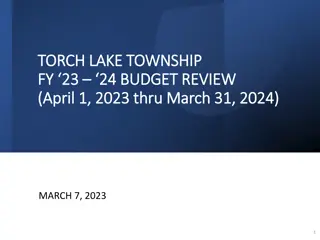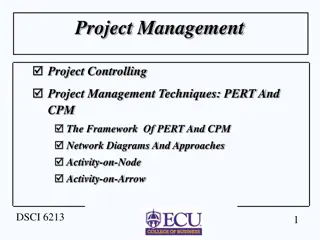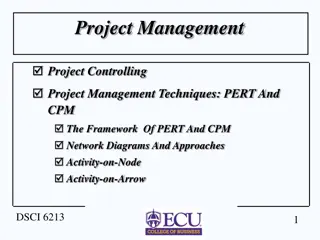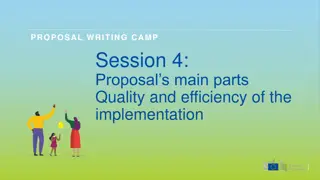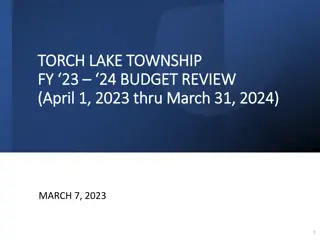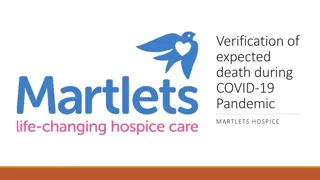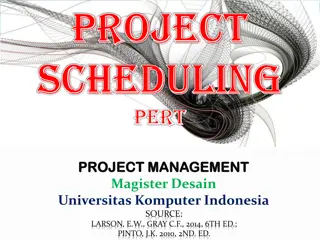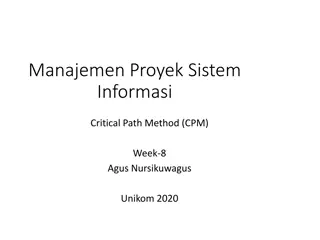
Investing in Career Opportunities for Youths with Disabilities - Vocational Rehabilitation and PERT Programs
Empowering youths with disabilities through vocational rehabilitation programs like PERT (Postsecondary Education Rehabilitation and Transition) to bridge the employment gap. Learn about initiatives, challenges, and support available for individuals with disabilities in pursuing successful careers.
Download Presentation

Please find below an Image/Link to download the presentation.
The content on the website is provided AS IS for your information and personal use only. It may not be sold, licensed, or shared on other websites without obtaining consent from the author. If you encounter any issues during the download, it is possible that the publisher has removed the file from their server.
You are allowed to download the files provided on this website for personal or commercial use, subject to the condition that they are used lawfully. All files are the property of their respective owners.
The content on the website is provided AS IS for your information and personal use only. It may not be sold, licensed, or shared on other websites without obtaining consent from the author.
E N D
Presentation Transcript
Investing in Career Opportunities for Youths with Disabilities Joe Ashley & Bob Schmidt
Employment Challenges 29.5 million working-age people had a disability in 2010 that s 16.6% of the working-age population Individuals with disabilities face employment challenges In 2010, 41% employment rate for individuals with a disability vs. 79% of those without a disability Median monthly income for people with a disability was about $1961, or about 28% lower than for those without a disability
Vocational Rehabilitation VR started after WW I for returning veterans with physical disabilities Extended to civilian population and a broad array of disabilities Focus is on employment and earnings VR is Title IV of Workforce Innovation and Opportunity Act Eligibility-based: Documented disability that constitutes impediment to employment and individual can benefit from services Cost sharing between state and federal government In Virginia: DARS is general agency; DBVI serves individuals who are blind or vision impaired Individualized plans for employment Staff and community partners provide many services
Focus Tonight VR serves the full age range and a broad array of disabilities Cognitive, emotional, physical, vision, hearing, substance abuse Tonight, focus on PERT A program for transitioning youth from high school to work 52% of participants have an intellectual disability or a specific learning disability Rises to 80% when add autism and ADHD
What is PERT? Postsecondary Education Rehabilitation and Transition PERT is a collaborative effort between the Virginia Department for Aging and Rehabilitative Services and the Virginia Department of Education. PERT provides Vocational, IL and Residential/Leisure assessment Transition planning Trial vocational training opportunities
The ideal PERT Student Age 16 or 2.5 years from high school graduation (actual ages range from 15 to almost 22 years). The student must have a disability and be enrolled in special education or have a 504 plan and qualify for DARS services. The student must be able to function safely in a residential campus environment with staff support. The student must be medically, physically and psychologically stable.
PERT: From inception to now Inception in 1985: a federally-funded demonstration grant 50 students/year 6 local school divisions Evolved into an integral component of school-to-work transition services for eligible secondary-aged youth with disabilities in the public school system. 500+ students/year Statewide: up to to 132 local school divisions
Report Implementation PERT Summary Report following 10-day in- residence assessment Six weeks post exit Student/Family, DARS counselor and the school Report Implementation At the student s local school during remaining high school
Follow-Up Programs PERT Situational Assessment Program (SITS) Ten day trial training Approximately 60 students/year summer and school year dates available Disability, Academic or Interest issue Some return to DARS for VR services
Impact for Student PERT goals for the individual students Improved understanding of disability and how to achieve goals Strengthened IL applications at home and in community Foster more interest in school and reduce early drop-out rate Increases post-secondary training Increases long term earning potential **(ROI clearly answers)
Value to PERT Partners PERT impact goals for the school Systemic Impact on Transition Planning Local Level Improved transition planning early planning better than later (ROI) Provides age appropriate transition services Strengthens collaborative efforts with DARS Parents and teachers often perceive increases in student self-esteem and self-advocacy
Rehabilitation Rate Since 2009 the Rehab Rate for PERT Initial, PERT SIT (Life Skills or Training) and Training combinations is 78% which is exceptional.
Evaluating PERT: Concepts Q: How would circumstances change for a randomly- chosen person if complete a Workforce Program? The Gold Standard: Randomized Clinical Trials But Individuals in PERT are not a random sample; they self select. Plausibly, they might Be more motivated Have stronger family support Be more severely disabled
Evaluating PERT: Compared to Whom? Our earlier PERT analysis Current VR-ROI research
A Comparison Group Approach to Assessing Labor Market Outcomes from PERT Cohort: Applicants for DARS Services in SFY 1988 (Published in the VECAP Journal in 2006)
Quasi-Experimental Outcome Evaluation Framework Compared to Whom? Examples of statistical alternatives to an experimental control group Matched comparison group Natural experiment when program is only available in selected areas or for selected populations This study uses both
The Sample for the 1988 Study Includes PERT & other VR participants under age 18 in a natural experiment PERT participants matched on demographic and disability characteristics (only ID & LD) with DARS business as usual comparison group in same geographic school/planning district 91 in PERT treatment group , 142 in non-PERT comparison group
Long-Term Employment Data State Unemployment Insurance records have quarterly data for people in covered employment Study used quarterly earnings from the Virginia Employment Commission from 1985-2000 Includes 3 years pre-program (1985-1988) and 12 years post-program (1988-2000) Hit rate of about 80% having at least one quarter of covered employment
Chart 1: Earnings During the Year, if any $16,000 Mean Earnings in $2002 $12,000 $8,000 $4,000 Non-PERT PERT $0 -3 -2 -1 0 1 2 3 4 5 6 7 8 9 10 11 12 Year Relative to Time of Application (FY 1988)
Study Limitations Matched comparison group controls for some observed characteristics but some differences remain unknown to the researchers A blunt instrument Looks only at overall PERT impacts Says nothing about contributions of the component parts
A Structural-Equations Approach to Assessing PERT Labor Market Outcomes Cohort: 3,073 15-24 year-old applicants for DARS services in SFY 2000 (under review at the Journal of Labor Economics)
The Sample for the 2000 Study Focus is on transitioning youth who Applied for VR services during FY 2000 Were age 15-24 at application Were diagnosed with an ID, LD, and/or MI Sample composition PERT Not PERT Total VR Services 199 1,774 1,973 No VR Services 195 905 1,100 Total 394 2,679 3,073
Potential Ways for PERT to Affect Labor Market Outcomes PERT Services Alone May Directly Affect Employment Outcomes PERT May Affect the Efficiency of Remaining School Time on Employment Outcomes PERT May Affect the Efficiency of DARS Services on Employment Outcomes
The Econometric Model Allows estimation of the three separate impacts Uses a rich set of variables, including Quarterly earnings from 1997-2010 Demographics (age, gender, ethnicity, education, locale, etc.) Any or all disabilities Service receipt (if any) for 6 distinct types of VR services Uses state-of-the-science statistical techniques to bring our comparison groups closer to randomized control groups
An Economists View of PERT Effectiveness Rate of Return (ROR) on the $3,500 cost of the PERT Evaluation Over a 5-year period: 95.3% have positive ROR with median ROR of 72% annually Over a 10-year period: 99.3% have positive ROR with median ROR of 79% annually Alternatively, on an investment of $3,500 in PERT, a PERT consumer earns $2,600 more annually ($13,000 over 5 years) than a non-PERT consumer
How about a Real Persons View? We worked with PERT staff to craft a message that Is understandable to non-economists Can be used to market PERT to families PERT Impact on Finding a Job and Income After you find a job, participating in PERT will on average double the amount of a student s earnings in the long run Combined with one more year of education the chance of getting and keeping a job increases by 38% Increases chances of finding and keeping a job by 12%
A PERT Counselors Perspective I like to cite to students, families, and the community that the typical PERT student develops over a five-year period into a worker that makes more money than the control-group peer The idea is to be patient. I also like to tell 10th graders that they are an especially successful group for PERT because there is still time during high school to implement many of the recommendations they received from their PERT intake, like improving their academic achievement in reading and math.
Studys Effect on Staff Morale For me, it generates a sense of pride in my work. I have worked for a long time in the direct services (the front line so to speak) of special needs kids. ... PERT has been the one program that creates such a positive, long lasting change for the kids that are able to attend. for the program to get the findings that Joe and his team have come up with is validation that my time and effort have been well spent.
PERTs Impact for Student PERT goals for the individual students Improve understanding of disability and how to achieve goals Strengthen Independent Living potential at home and in community Foster more interest in school and reduce early drop-out rate Increase long term earning potential **(ROI study clearly demonstrates)
ROI to Schools The Bottom Line PERT provides a great return on investment for school systems. For the cost of doing a referral, some paperwork and financing transportation, each student, DOE, and DARS build a strong partnership. The school s locality eventually gets adults that can take care of themselves, financially support themselves, and pay taxes. Marianne Moore Instructional Specialist Middle/Secondary Transition Virginia Department of Education



